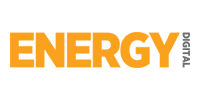Event Name: 2018 Solar Power Finance and Investment
Event Date(s): March 20 – March 22, 2018
Event Location: Omni La Costa Resort & Spa, 2100 Costa Del Mar Rd, Carlsbad, CA 92009
Event Description:
The Solar Power Finance & Investment Summit is the leading gathering place for the industry’s dealmakers. Each year, senior-level solar and financial executives mingle in an intimate setting that provides for an efficient, in-depth and focused networking experience. From beginning to end, the Summit offers up constant opportunities to meet key dealmakers, learn about their plans for the upcoming year, and capitalize on new prospects that will lead to successful deals. Networking extends into the night with hosted dinners and other activities!
The Summit is the primary industry event where key industry players come to stay abreast of the solar financing landscape. It also provides valuable insights into the ongoing developments in the industry, highlights upcoming strategic opportunities, and explores the industry’s efforts to overcome pressing challenges. The Summit’s unique environment has led previous attendees to rate it as the best value solar event in the industry — “worth every minute of my time”, says one attendee.
Executive Briefing – March 20, 2018: Solar Market Outlook and Business Development Landscape
Get the latest information on the business development landscape and which markets will be offering up opportunities for growth.
Workshop – March 20, 2018: Solar + Storage
Pick up all the information needed to build a solid understanding of the solar + storage market— both front-of- the meter and behind-the- meter. Find out the latest on storage + storage technology, policy, business models, project economics, financing and the business development outlook.
Workshop – March 20, 2018: Solar Power Finance and Investment Guide for Emerging Developers and Investors
Get a comprehensive primer on the financing of and investing in solar power in today’s solar market.
Find Fractal: Find Fractal in the exhibition hall. Fractal will also be sponsoring the Summit Briefing lunch reception.
Event Website: http://infocastinc.com/event/solar-power-finance-investment/
read more
 Micropower generation units, designed by GE’s India R&D centre in Bengaluru over the past two years, are now close to the stage of commercialisation. The units are expected to be hugely beneficial to remote microgrid-dependent communities.
Micropower generation units, designed by GE’s India R&D centre in Bengaluru over the past two years, are now close to the stage of commercialisation. The units are expected to be hugely beneficial to remote microgrid-dependent communities. India-based solar manufacturer and EPC player Vikram Solar has signed a collaboration agreement with the French Alternative Energies and Atomic Energy Commission (CEA), while at the founding ceremony of the International Solar Alliance (ISA).
India-based solar manufacturer and EPC player Vikram Solar has signed a collaboration agreement with the French Alternative Energies and Atomic Energy Commission (CEA), while at the founding ceremony of the International Solar Alliance (ISA). A big challenge for the EV and renewable energy revolution is that the much-needed batteries are made from lithium, a relatively rare and pricey metal. Rather than focusing on other metals like magnesium, a team of scientists from RMIT University in Melbourne have figured it out to build rechargeable “proton” batteries from abundant carbon and water. If commercialized, the technology could allow for cheaper Powerwall-type home or grid storage to back up solar panels or windmills.
A big challenge for the EV and renewable energy revolution is that the much-needed batteries are made from lithium, a relatively rare and pricey metal. Rather than focusing on other metals like magnesium, a team of scientists from RMIT University in Melbourne have figured it out to build rechargeable “proton” batteries from abundant carbon and water. If commercialized, the technology could allow for cheaper Powerwall-type home or grid storage to back up solar panels or windmills. The Valuation Office Agency (VOA) is calling on the sector to engage with the development of business rates that will be applied to energy storage projects in 2022, including those attached to subsidy-free solar farms.
The Valuation Office Agency (VOA) is calling on the sector to engage with the development of business rates that will be applied to energy storage projects in 2022, including those attached to subsidy-free solar farms. We hear from Ram Ramachander, Chief Digital Officer & Chief Commercial Officer for Social Innovation Business, at Hitachi Europe Ltd about how it is aiming to deliver future-focused battery storage solutions.
We hear from Ram Ramachander, Chief Digital Officer & Chief Commercial Officer for Social Innovation Business, at Hitachi Europe Ltd about how it is aiming to deliver future-focused battery storage solutions.
 While California and other solar-heavy states are leading on energy storage targets, experts say New York, New Jersey, Massachusetts and Maryland could quickly close the gap, with political support.
While California and other solar-heavy states are leading on energy storage targets, experts say New York, New Jersey, Massachusetts and Maryland could quickly close the gap, with political support. Researchers have tapped into the benefits of both passive and active equalizers to create a cheaper and longer lasting battery pack.
Researchers have tapped into the benefits of both passive and active equalizers to create a cheaper and longer lasting battery pack. Scientists have created the world’s first rechargeable proton battery, a crucial step towards cheaper and more environmentally-friendly energy storage.
Scientists have created the world’s first rechargeable proton battery, a crucial step towards cheaper and more environmentally-friendly energy storage.



